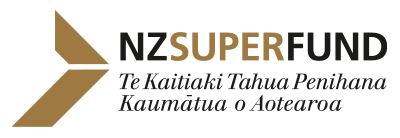Media statements
Letter from CEO Matt Whineray - NZ Super Fund 2018 Annual Report
POSTED ON: 10 October 2018
Share:
Kia ora,
I’m delighted to present my first Annual Report as CEO of the NZ Super Fund.
This year’s Annual Report has the theme “Staying the course through times of change –Te mārō o te haere i ngā huringa o te wā.”
This is an important message for our stakeholders as we look to the future in what is a challenging external environment for the Fund.
In this year’s Report we therefore take some time to explain the implications of our choice to weight the Fund towards growth assets, which exposes it to short-term volatility in order to generate long-term returns for NZ taxpayers.
To make this easy for people to understand, we work through a simulation of what would happen to the Fund if the Global Financial Crisis repeated itself. This simulation shows that the Fund would lose roughly half its value (around NZ$20 billion, given the Fund’s current size), but that the lost value would be recovered within a 20 month period.
This expected recovery in the Fund’s value is only feasible, however, if we are able to ‘stay the course’ with our investment strategies through a market cycle.
The major risk to the Fund is not that it will experience significant volatility in returns – we know that it will. The volatility may not be so dramatic (and the recovery so quick) as in the Global Financial Crisis. But the major risk is the same: that we lose our nerve, close down our investment positions and lock in our losses.
We encourage stakeholders to understand that the main challenge in persisting as a long-horizon investor is in looking through short-term shifts in value and focusing on more appropriate long-term metrics of success.
It’s also important to remember that the best investment opportunities are often found in a market downturn.
I talk about these points further in a short video, and there’s more detail at pages 20-21 in the Annual Report.
In the Report, I’m also pleased to highlight the progress we have made in implementing the climate change investment strategy we announced in 2016. The key achievement over the year was the application of a low-carbon approach to our emerging market equities mandates. More information is available in our climate change case study at pages 56-57.
Other key elements of the report include:
- a summary of the value added by our active investment activities (page 40);
- a short article, targeted at finance industry specialists, on “Benchmarking our Performance” by David Iverson, Head of Asset Allocation (pages 38-39);
- details of our responsible investment engagement activities (pages 64-70);
- a case study on the Fund’s preferred partner relationship with the newly established Māori Investment Fund, the Te Pūia Tāpapa Fund (page 48);
- details of how we have brought our global voting activity in-house (page 62). On this, I note that we will be making our voting activity at a company level (both in New Zealand and overseas) public on our website. We will be in touch with more information on this later in the year.
For more information please see our Annual Report microsite, which features a video interview with Chair Catherine Savage, and the full Annual Report PDF.
Hard copies of the Annual Report are available on request from [email protected]. We also welcome feedback on the report, to the same address.
Ngā mihi
Matt Whineray
